Exhaust Fans For Bathrooms
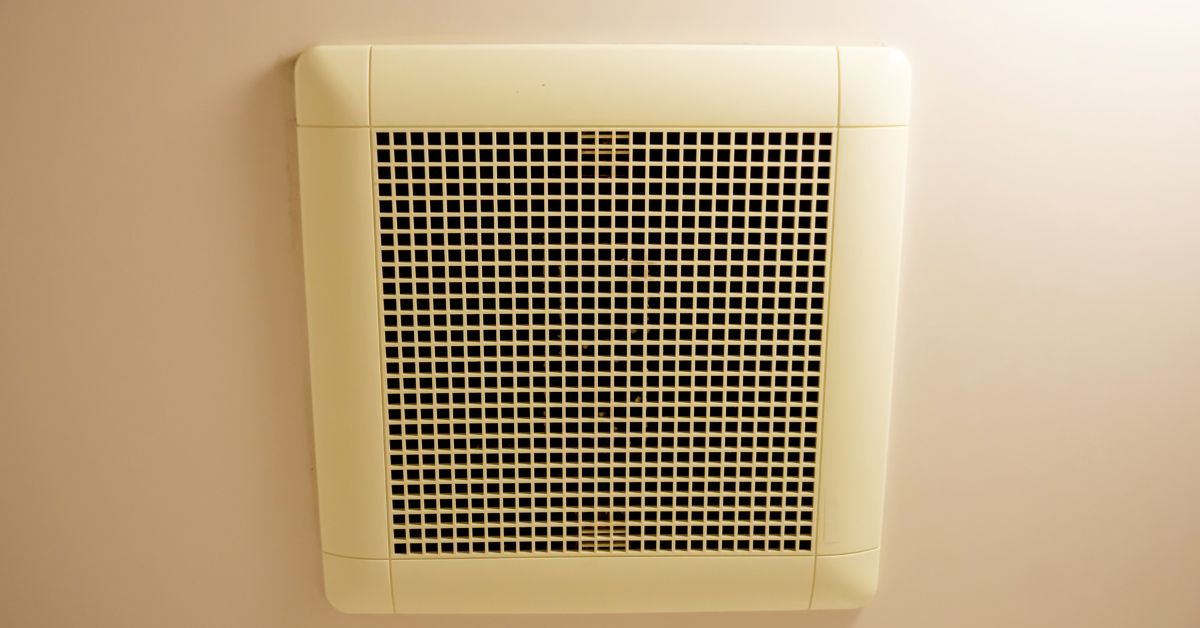
Bathrooms are notorious for being damp environments, often causing issues like mould and mildew. These problems not only damage your home but also pose health risks to you and your family. Luckily, installing an exhaust fan is a simple and effective solution to keep your bathroom well-ventilated and free from excess moisture. In this guide, we’ll walk you through everything you need to know about bathroom exhaust fans, from the benefits to the types available.
Curious about the importance of air quality in bathrooms? Check out this guide from the EPA. For more detailed insights into combating mould growth, explore Mayo Clinic’s expert advice.
Are Exhaust Fans Necessary In Bathrooms?
Yes, exhaust fans are crucial for bathrooms. These fans remove steam and moisture, preventing condensation that often leads to the formation of mould and mildew. Moisture accumulates from daily activities like showering and bathing. When warm steam hits cold bathroom surfaces, it condenses and can seep into walls, floors, and windows. Over time, this results in structural damage and a persistent musty smell.
The presence of mould in your bathroom is more than just an aesthetic concern. Long-term exposure to mould spores can cause health issues such as coughing, sneezing, and even skin irritation. If you suffer from respiratory problems, mould can worsen these conditions, potentially leading to severe complications.
Exhaust Fans Are The Best Solution
Exhaust fans are the best line of defence against moisture buildup in your bathroom. When you install an exhaust fan, it pulls moist air out of the bathroom through a duct, expelling it outdoors. This stops water vapour from condensing into liquid form, reducing the risk of mould growth.
Once the moisture-laden air is vented, fresh, drier air circulates, improving the overall air quality in your bathroom. Even if you live in a region with mild weather, an exhaust fan is still essential to maintain a healthy bathroom environment.
For a broader look at home ventilation solutions, Energy Star provides a helpful resource.
What Are The Three Types of Exhaust Fans?
When choosing an exhaust fan for your bathroom, it’s important to understand the different types available. Each has unique features tailored to specific needs. Here’s a breakdown:
1. Axial Exhaust Fans
Axial exhaust fans move air in a straight line, making them ideal for small rooms like bathrooms. These fans are compact, quiet, and work best for short distances, which is why they’re commonly installed in walls with direct access to the outdoors.
2. Centrifugal Exhaust Fans
Centrifugal fans are designed for spaces without exterior walls. These fans work by spinning air outward using centrifugal force, making them more powerful than axial fans. Due to their higher extraction rate, they’re suitable for larger spaces like big bathrooms or kitchens. However, they tend to be noisier than other options.
3. Inline Exhaust Fans
Inline fans are typically installed in ceilings and are excellent for bathrooms that need long ducting systems. Because these fans are placed remotely, they operate more quietly. Inline fans are a great solution for removing moisture in bathrooms with no external walls or for rooms where noise control is a priority.
| Type of Exhaust Fan | Best For | Noise Level | Air Exchange Rate | Installation Location |
|---|---|---|---|---|
| Axial Exhaust Fans | Small bathrooms or rooms with exterior walls | Low | Moderate | Wall-mounted |
| Centrifugal Exhaust Fans | Large bathrooms or rooms without exterior walls | High | High | Ceiling-mounted |
| Inline Exhaust Fans | Bathrooms requiring long ducting or noise-sensitive areas | Low | Moderate to High | Ceiling or attic-mounted |
Which Type Works Best For a Bathroom?
For most bathrooms, inline exhaust fans are the top choice. They are particularly effective in bathrooms with long ductwork and can efficiently ventilate the space while operating quietly. Whether your bathroom is large or small, inline fans can help you maintain a clean, fresh environment free from moisture-related issues like mould and mildew. This option is also great for areas with high humidity or noise-sensitive spaces.
Credit: AMRE Supply
Different Methods of Installing Bathroom Exhaust Fans
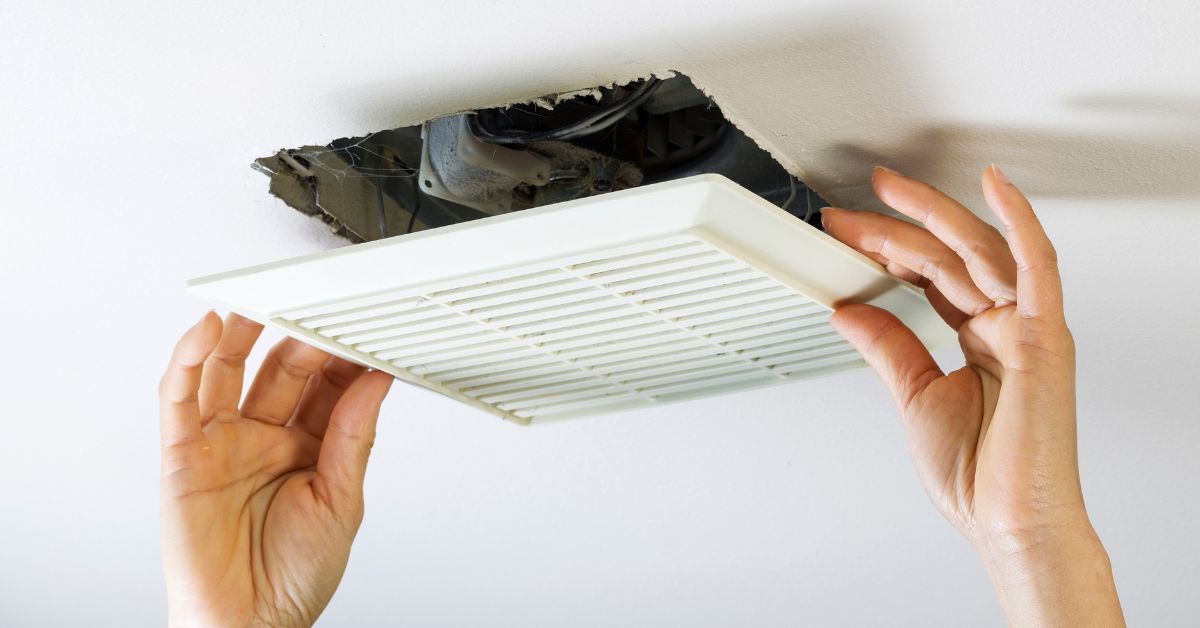
Choosing the right fan type is only half the battle—you also need to consider the installation method. Here are the four most common ways to install a bathroom exhaust fan:
1. Ceiling Mount
The ceiling mount is the most popular installation method. It connects directly to a duct system that vents moisture-laden air outdoors. This method is especially effective in smaller bathrooms.
2. Wall Mount
When ceiling installation isn't possible, a wall-mounted fan is an excellent alternative. It extracts air directly outside without requiring additional ductwork, making it a practical solution for bathrooms where space is limited.
3. Inline Fans
As mentioned earlier, inline fans are installed remotely in the ductwork, often in the attic, making them ideal for long-duct systems and noise-sensitive areas. These fans can be a bit more complicated to install, but they offer superior performance in large or high-humidity bathrooms.
4. Window Mount
Window-mounted fans are a less common option, but they work similarly to window air conditioners. These fans are installed directly into a window unit and are typically used when other installation methods are impractical.
How To Choose The Right Shower Exhaust Fan?
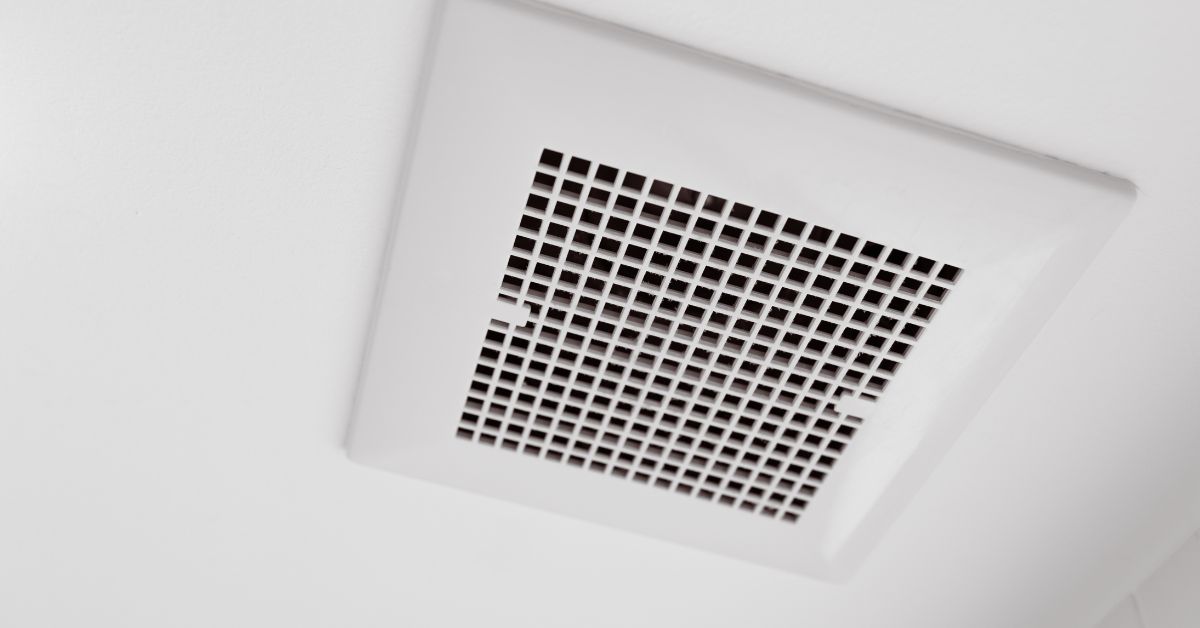
Choosing the right shower exhaust fan can be daunting with so many options available on the market. But having an efficient exhaust fan is essential to keeping your bathroom free from excess moisture, which can lead to problems like mould, mildew, and even structural damage. In this guide, we’ll cover all the factors you need to consider when selecting the ideal fan for your bathroom, ensuring you make an informed choice.
For additional insights on bathroom ventilation, check out the Energy Saving Trust and learn more about maintaining healthy air quality in enclosed spaces from the World Health Organisation.
Think About How You Want Your Fan to Operate
When selecting a shower exhaust fan, one of the first things to consider is how you want it to operate. Most fans come with different modes, so you can tailor them to your needs.
- Manual Operation: Many exhaust fans can be operated manually using a cord switch or a remote control. These fans give you control over when they run and how long they operate.
- Timer-Controlled Fans: Some exhaust fans are equipped with timers, which allow them to run for a set period before automatically shutting off. This is ideal if you want to ensure that moisture is removed after you leave the bathroom.
- PIR Sensor Fans: For a more automated solution, PIR sensor fans activate when they detect movement in the bathroom. This hands-free option ensures the fan operates whenever the bathroom is in use.
- Humidity Sensors: Advanced models come with humidity sensors that automatically trigger the fan based on the moisture level in the room. This ensures that the fan runs only when necessary, saving energy and reducing wear and tear on the fan.
Install According to Bathroom Zones
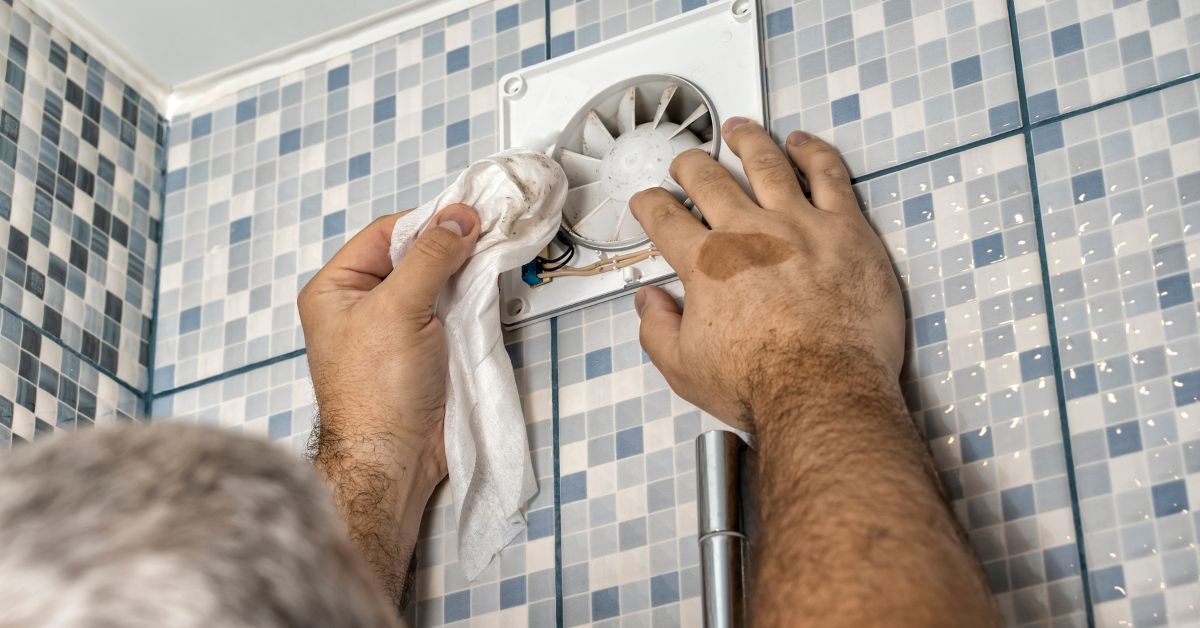
Not every area in your bathroom will be exposed to the same amount of moisture. To ensure optimal performance and safety, it’s important to install your exhaust fan based on bathroom zones, which are defined by the level of exposure to water.
- Zone 1: This area includes the space above your shower or bath, up to 2.25m vertically. If you plan to install a fan in this zone, it should have a minimum IP45 rating to ensure it can withstand moisture. For more powerful protection, opt for an IP65 rating.
- Zone 2: This zone is within 0.6m of Zone 1, typically around the edges of your shower or bath. An IP rating of at least IP44 is recommended here.
- Zone 3: This is the area where water exposure is minimal. No specific IP rating is required for this zone, but you may still want to ensure your fan has some level of moisture protection.
IP ratings indicate how well a fan is protected from solid objects and water. The higher the number, the more resistant it is to these elements. For more information on IP ratings, check this guide by the Electrical Safety Foundation International.
Credit: Home Performance
Check the Air Exchange Rate
The air exchange rate of an exhaust fan is crucial in determining how well it can remove moisture from your bathroom. This rate is measured in either cubic metres per hour or litres per second (L/s).
- For domestic bathrooms, building regulations typically require a fan with an air exchange rate of at least 15L/s.
- For larger bathrooms or those used more frequently, you may need a higher extraction rate to effectively remove moisture.
Choosing a fan with the correct air exchange rate is essential to maintaining a dry, healthy bathroom environment.
Consider a Heat Recovery Option
Over time, some exhaust fans can overheat, which may cause damage to their components and shorten their lifespan. Choosing a fan with a heat recovery system can help avoid this issue.
Heat recovery exhaust fans work by extracting stale air from your bathroom, kitchen, or utility room and passing it through a heat exchanger. Fresh air is then brought in and filtered through the exchanger, allowing you to retain the heat while ventilating the room.
This option not only extends the life of your fan but also improves energy efficiency by recycling the heat, making it an environmentally friendly choice.
Consider the Size of Your Fan
The size of your bathroom will determine how powerful and large your exhaust fan should be. If you’re installing a new fan into an existing space, match the size to the pre-cut hole. However, if you’re renovating or designing a new bathroom, you’ll need to measure the space to choose the appropriate fan size.
- To get started, measure the height, width, and length of your bathroom. This will give you a rough idea of the fan power needed.
- The ideal fan size for most bathrooms typically ranges between 4 to 6 inches.
Selecting the right size ensures your fan can effectively remove moisture without being overworked.
Important Tips for Installing Bathroom Exhaust Fans
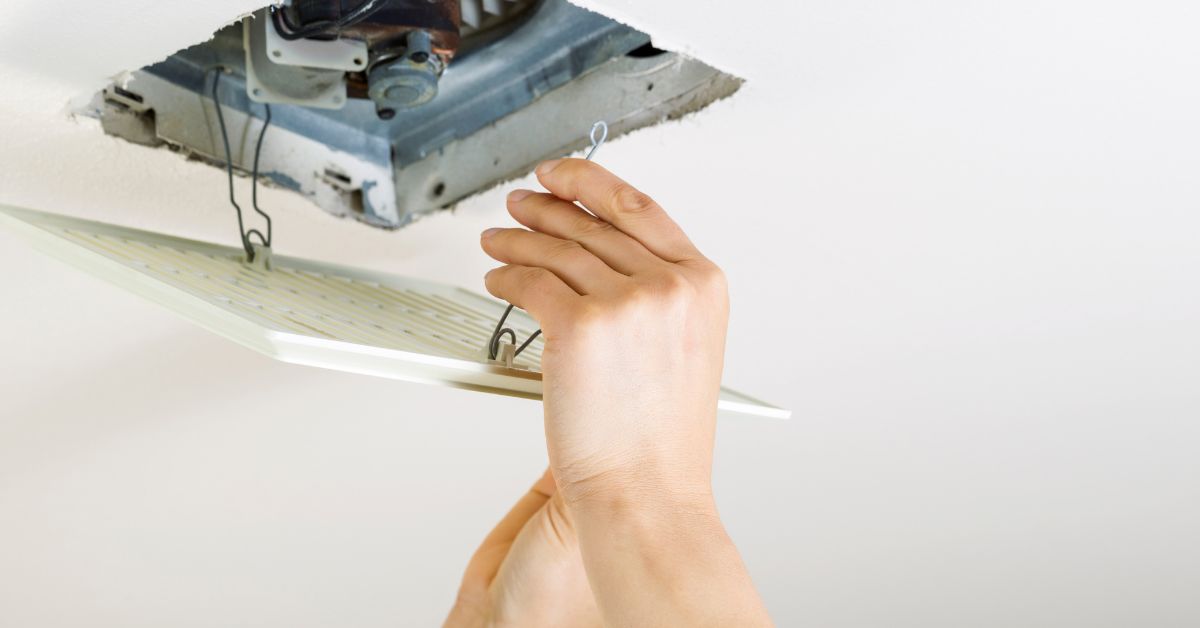
Choose the Type of Fan
The type of fan you select can significantly impact its performance. Whether you opt for manual, timer-controlled, or sensor-based fans, each type offers a different level of convenience and control. Also, check the voltage of the fan to make sure it’s compatible with your home’s electrical system.
Be Mindful of Existing Cables and Water Pipes
Before installing a wall-mounted fan, ensure there are no water pipes or electrical cables behind the wall. Accidentally drilling into these can cause serious damage and result in costly repairs. Use a cable detector to check the walls for any hidden components.
Plan the Ducting Route
Most exhaust fans require ducting to vent air outside. The ducting route must be planned carefully. Keep it as short and straight as possible to maximise the fan’s efficiency and avoid bends that can slow down air extraction.
What Are the Best Exhaust Fans for Bathrooms?
At Meteor Electrical, we offer a variety of high-quality exhaust fans designed to keep your bathroom free from moisture and maintain air quality. Here are some of our top recommendations:
1. Xpelair Simply Silent Exhaust Fan
The Xpelair Simply Silent Exhaust Fan is a fantastic option for bathrooms of all sizes. It comes with an over-run timer, allowing you to control how long it operates. The fan uses Ghost Air Movement technology to run quietly, making it ideal for homes where noise is a concern. With air exchange rates of 15L/s or 21L/s, it’s a highly efficient option for moisture control.
The iCon Eco Exhaust Fan is a great choice for those looking for both style and function. It’s compact yet powerful, with an air extraction rate of 18L/s, perfect for bathrooms and shower rooms. Its sleek design ensures it blends seamlessly into modern bathrooms.
3. Xpelair Simply Silent Shower Exhaust Fan
The Xpelair Simply Silent Shower Exhaust Fan is a perfect fit if you need an integrated exhaust solution for your shower. It can be easily installed in the ceiling, comes with flexible ducting, and operates quietly using Ghost Air Movement technology. This fan also has an integral timer feature, making it a convenient and efficient choice.
Conclusion:
Choosing the right exhaust fan for your bathroom is essential for maintaining a healthy, moisture-free environment. With options ranging from manual to sensor-operated fans, there’s a solution for every need and budget. When you’re ready to upgrade your bathroom, Meteor Electrical offers a wide selection of high-quality exhaust fans that combine efficiency with durability. Visit Meteor Electrical today and find the perfect fan for your bathroom!
FAQs:
1. What size exhaust fan do I need for my bathroom?
The ideal size for a bathroom exhaust fan is typically between 4 to 6 inches, depending on the size of the bathroom. Measure your bathroom’s dimensions to determine the correct fan power required for effective ventilation.
2. How do I know if my exhaust fan is powerful enough?
Check the air exchange rate, measured in litres per second (L/s). For most bathrooms, a fan with a rate of at least 15L/s is recommended. Larger or more frequently used bathrooms may require a higher rate.
3. Where should I install my bathroom exhaust fan?
It’s best to install the exhaust fan in areas with the highest moisture, such as above the shower or bath (Zone 1), ensuring it has the appropriate IP rating for moisture protection.
4. Can exhaust fans help reduce mould and mildew?
Yes, exhaust fans are designed to remove moisture from your bathroom, which prevents the buildup of mould and mildew. They help keep the air dry, reducing the risk of moisture-related damage.
5. What is the difference between axial and centrifugal exhaust fans?
Axial fans are smaller and work best for short distances, making them ideal for small bathrooms. Centrifugal fans are more powerful, with higher extraction rates, suitable for larger spaces or rooms without exterior walls.

